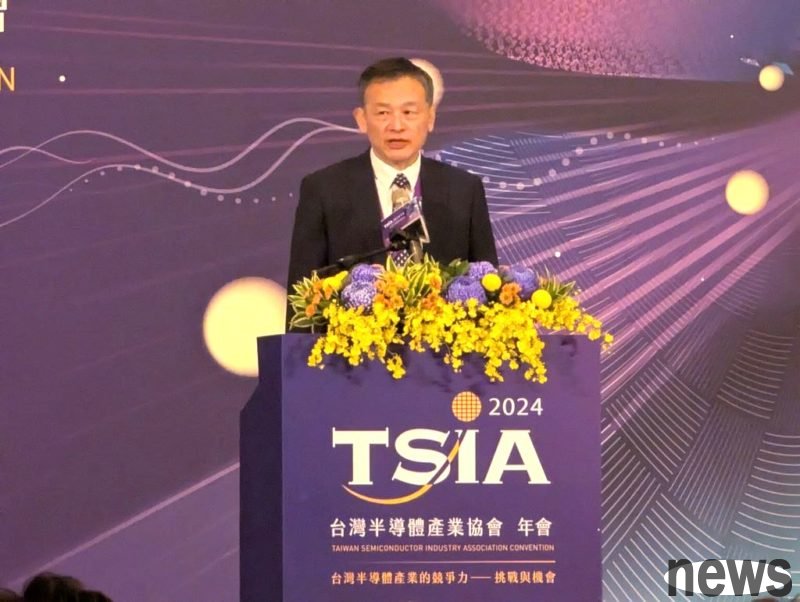
Hou Yongqing, chairman of the Taiwan Semiconductor Industry Association (TSIA), said that in the face of the trend that Taiwan’s semiconductor ecological supply chain may need to be transferred to the United States, companies have different strategies for going to the United States due to different business considerations. However, the challenges that industry players generally face focus on three major aspects, including land acquisition, simplification of regulatory procedures, and assistance from local personnel.
Hou Yongqing pointed out that because the laws and regulations of different countries are different from those of Taiwan, if we completely apply Taiwan's methods, we may encounter many surprises. To this end, the association is collecting the challenges faced by member companies in the United States and communicating this information to the U.S. government and relevant partners. At the same time, the association also actively arranges for member companies that have come to the United States earlier to share experiences and lessons learned to help other companies understand and respond to regulatory issues.
As for the U.S. Department of Commerce’s demand for 50% of Taiwan’s semiconductor production capacity, Hou Yongqing said that it is still unclear the exact content of the U.S. request. Based on what is known about existing pipelines, this requirement may lean toward wanting 50% of domestic U.S. demand to be produced in the United States. This involves production distribution in Taiwan and many other regions. The association will wait for the United States to clarify the details before deciding how to respond. In addition, the Taiwan government has taken action. The Executive Yuan has established a special group to assist Taiwan's semiconductor industry in investing and developing businesses abroad. The association is providing the collected needs of member companies to the group through channels such as the Ministry of Economic Affairs.
As for the power supply issue that the semiconductor industry is concerned about, Hou Yongqing emphasized that electricity is one of the biggest bottlenecks in the development of the global semiconductor industry. Therefore, the association puts forward three core concerns for future power development. The first is the guarantee of total power. The association has proposed to the government the estimated power consumption of member companies in the next ten years. It hopes that the government can ensure supply in the total power planning so that the industry will not be affected. Secondly, there is the certainty of green energy supply. Green energy supply is crucial, and it is necessary to ensure that the amount of green energy is sufficient to deal with global carbon emissions issues.
The last concern is the issue of stability. Hou Yongqing emphasized that in addition to sufficient total power supply, it is also necessary to ensure that the power supply is stable and will not cause power outages. Short-term power outages will have a great impact on the manufacturing industry, and it is necessary to ensure that the power system can continue to supply under extreme circumstances. Although the association understands that according to government plans, green power should be able to meet or even slightly exceed industry demand, the association is most worried about execution, that is, whether the plan can be realized as scheduled. Therefore, the association calls on the government to provide an annual timetable so that the industry can regularly check the progress of green power development.
Regarding the construction of a localized supply chain, Hou Yongqing pointed out that the association has two goals. One is to strengthen Taiwan’s existing supply chain, and the other is to introduce overseas technology. At present, the first step of the association is to focus on the localization of equipment, and the next step will be extended to materials to make the supply chain more stable. Especially in the field of advanced packaging, driven by the wave of AI, the association believes that Taiwanese manufacturers are facing significant business opportunities and can drive the development of related equipment and material manufacturers.
Among them, in terms of key raw materials (such as materials subject to Chinese control), the association assesses that since the suppliers themselves have sufficient stocks, the short-term impact on the overall industry is currently low. However, in the medium to long term, the industry must plan for alternative sources of supply (such as Australia) and take time to evaluate and convert new chemical feedstocks. At present, the association is continuing to monitor the relevant situation with all manufacturers.
As major international manufacturers such as NVIDIA have successively set up R&D teams in Taiwan, the challenge of insufficient domestic talent has become increasingly prominent. Therefore, the association believes that introducing high-value, high-quality companies is the first step, and the next challenge is how to expand the overall talent supply.
In order to expand the semiconductor talent pool, the association is adopting multiple strategies, including school education, to encourage students to join the semiconductor industry. There is also a cross-field training component, which is expected to offer a series of courses so that even people without a background in information, chemistry or physics can enter the semiconductor industry after studying. We can even encourage more female compatriots to join the semiconductor industry and expand the overall talent base.
Regarding EUV equipment, which is indispensable in advanced manufacturing processes, Hou Yongqing believes that although it consumes a lot of power, the technological advancements it brings can enable subsequent electronic products to achieve significant power saving effects (power savings of 25% to 30% from one node to the next). Therefore, from the perspective of global society as a whole, the EUV process actually saves electricity.
